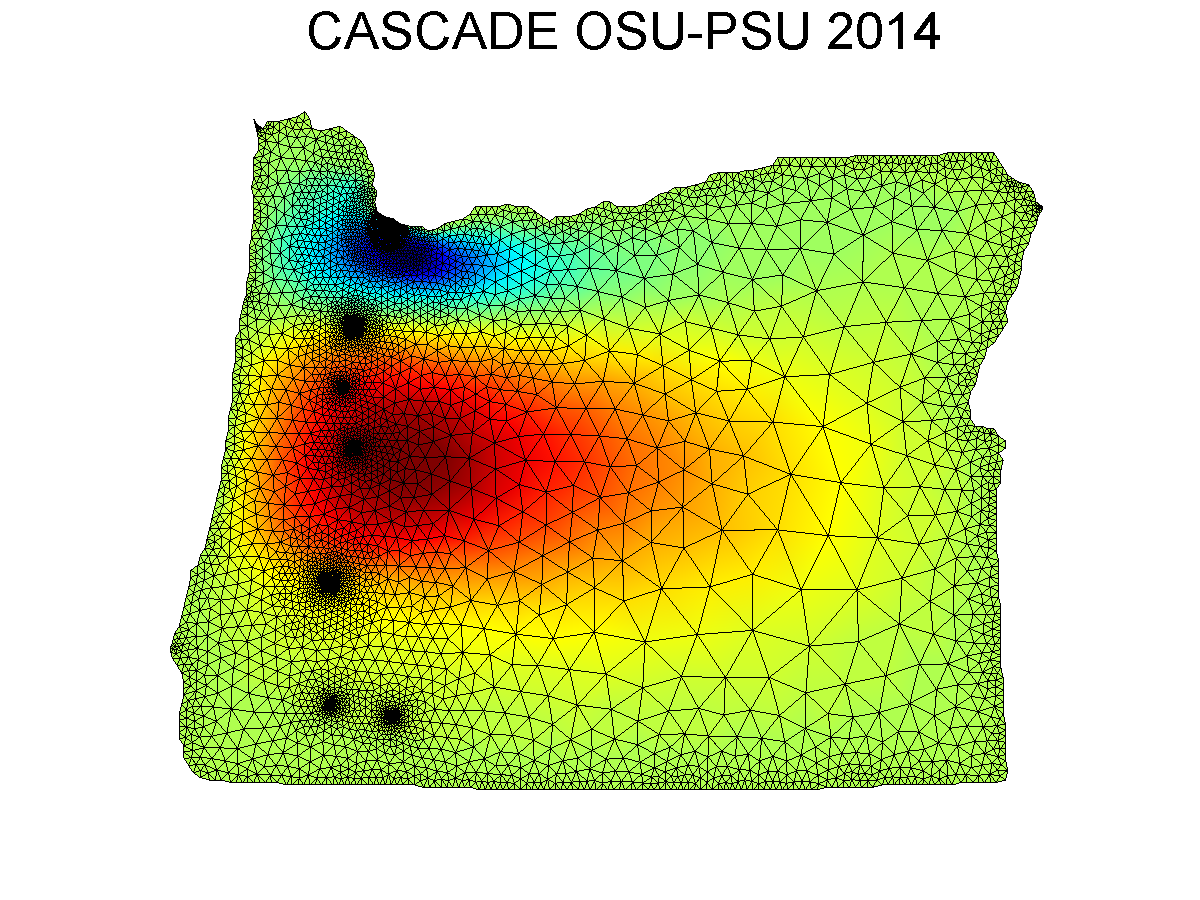|
|
| Schedule and assignments: |
|---|
-
9/30: Introduction. Why FE? Why not FD, FV?
-
10/2: Variational formulation for two-point BVP. (D)=>(V)<=>(M).
Minimization of energy functionl. [Read Johnson, Chapter 1]
- 10/4: Finite dimensional variational problem leading to the
linear system, with piecewise linears.
- 10/7: LAB1 (meet in MLC Computer lab Kidd 108J.
- 10/9: L2, l2, RN as normed and
inner product spaces. How to compute the norm ||u-uh||. How
to approximate it using numerical integration. Quick and dirty way
... see fem1d.m that we used in LAB1.
Assignment 1 is due Monday, Oct. 21 in class.
(*) Make sure you
provide clearly written out solutions that provide your
insight. [A bunch
of graphs stapled together without guiding narrative or some hastily typed
calculations ... are NOT a solution].
Sending
solutions in PDF (only) by email is acceptable as long as you follow (*)
- 10/11: Basic error estimate for 1D problem.
Galerkin orthogonality => best approximation & interpolation estimate => O(h).
- 10/14: Recall Lp spaces. Introduce weak derivatives and Sobolev spaces H1.
- 10/16: Higher order weak derivatives.
Space V=H01. Revisit why FE solution
is the best approximation in Vh.
- 10/18: Start FE in 2D/3D.
Go through the steps of the FE algorithm
as in Assignment 2 due Monday, Oct. 28 in class.
- 10/21: Continue algorithmic and practical aspects of FE projects in 2D. Mesh generation etc.
- 10/23: Review Assignment 1. Start elliptic BVPs in dimension d
Read [Chapter 2 of Johnson and Chapters I, II.1-2 of Braess].
- 10/25: Bilinear forms and other elements of (asbtract) variational theory for elliptic PDEs.
- 10/28: Dual spaces and linear continuous functionals. Riesz
representation theorem in Hilbert spaces. Lax-Milgram theorem.
Start working on Assignment 3.
PART A (Problems 1-2) is due Monday, Nov. 11 in class.
PART B (Solve 3 and one of 4-6) is due Friday, Nov. 15 in class.
- 10/30: FE formulation in 2D
- 11/1: Bilinear forms for an elliptic problem in 2D.
Poincare-Friedrichs inequality for H01.
- 11/4: Meet in the MLC lab to work on your computational assignments.
Students who plan to use software other than ACF for the subsequent
2D/3D projects please come prepared to show which software you want to
use. What are the features, templates, demos.
- 11/6: More on (reference) element calculations.
- 11/8: Assembly process ... and element matrices. Example on a uniform grid.
- 11/11: Choice of space Vh [Braess, II.4-5]
- 11/13: Finite element error estimation process in energy norm: E-GO-C-I
- 11/15: Go over quadratic elements and error calculations. Interpolation error
- 11/18: Interpolation error in Sobolev seminorms.
- 11/20: Bramble-Hilbert lemma [Braess, II.6]. How interpolation
constants depend on the quality of the mesh (angles !)
Assignment 4 due Monday, December 2.
You can find the files through code/teaching links. In particular, you will need
tri_quadcofs.m and
interp2d.m
- 11/22: how to solve problems with "Dirac delta" on the right hand side which arise when
your flux takes a jump.
Finite element spaces Pk and Qk.
Handout on Aubin-Nitzsche trick to get error estimates in L2.
- 11/25: What is inside stima3.m ? stima4.m ? How to include diffusion coefficient.
L2 error estimates. Superconvergence.
- 11/27: Boundary conditions other than Dirichlet: variational
form. How this is implemented in practice in FE code.
Preparation for the final group project.
- 12/2: A-posteriori error estimates (introduction) and grid adaptivity
Final group project: outline and assignment to individuals.
Preliminary results of projects due to Project Manager by noon on Dec. 10, 2013.
Final results due to Project Manager by noon on Dec. 12, 2013.
- 12/4: Finish grid adaptivity. Go over group projects.
- 12/6: Time dependent problems. Advection terms. THE END.
 RESULTS of FINAL PROJECT RESULTS of FINAL PROJECT
|
|